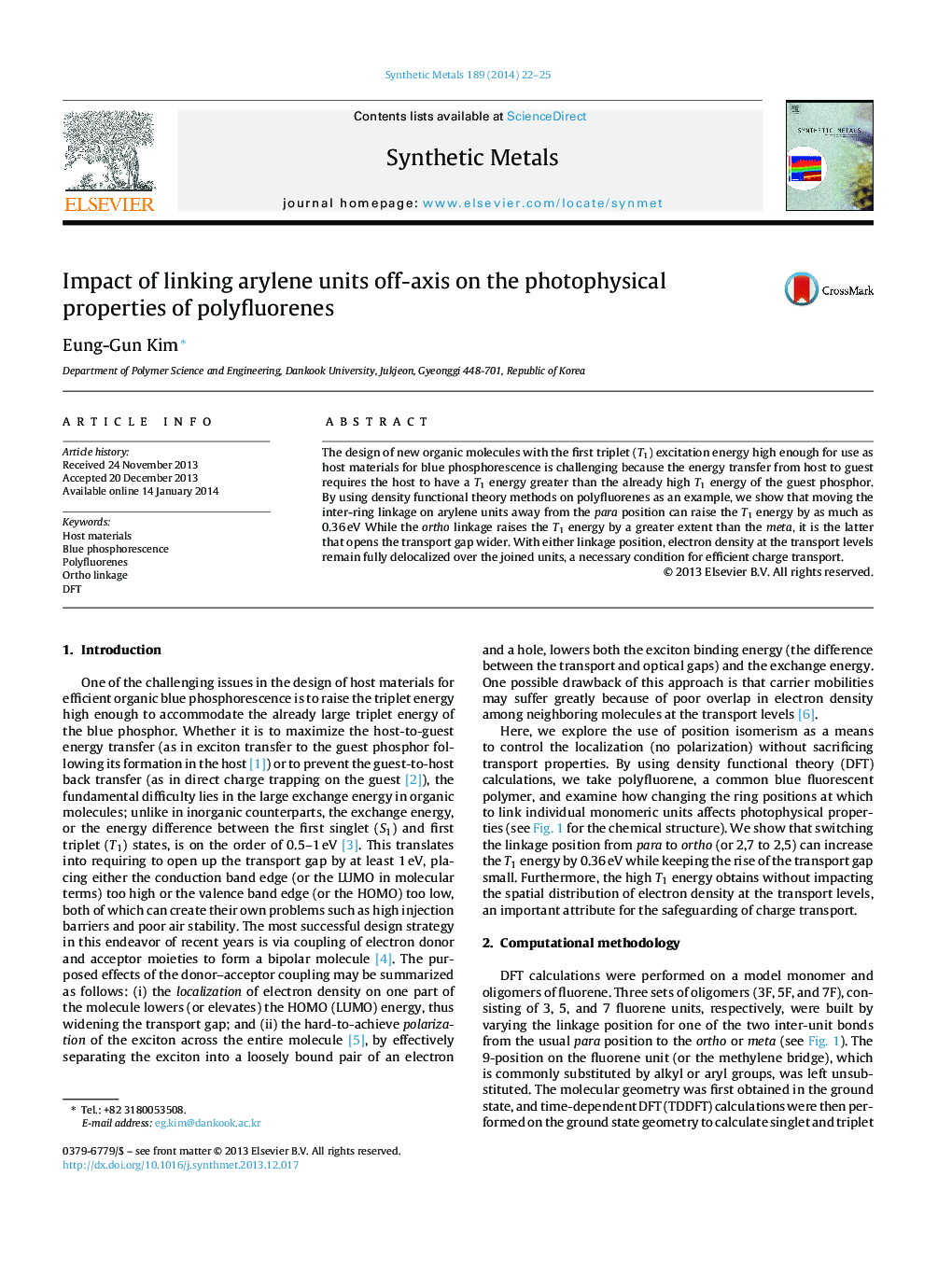| Article ID | Journal | Published Year | Pages | File Type |
|---|---|---|---|---|
| 1441033 | Synthetic Metals | 2014 | 4 Pages |
•Switching the linkage position at one of the two connecting bonds from the usual para position can raise the T1 energy by as much as 0.36 eV.•The ortho linkage pushes the T1 higher than the meta linkage all the while keeping the transport gap lower, the latter being critical for injection of charge carriers.•Uniform electron density is maintained over the entire molecule at both the transport levels, a necessary condition for efficient charge transport.
The design of new organic molecules with the first triplet (T1) excitation energy high enough for use as host materials for blue phosphorescence is challenging because the energy transfer from host to guest requires the host to have a T1 energy greater than the already high T1 energy of the guest phosphor. By using density functional theory methods on polyfluorenes as an example, we show that moving the inter-ring linkage on arylene units away from the para position can raise the T1 energy by as much as 0.36 eV While the ortho linkage raises the T1 energy by a greater extent than the meta, it is the latter that opens the transport gap wider. With either linkage position, electron density at the transport levels remain fully delocalized over the joined units, a necessary condition for efficient charge transport.
